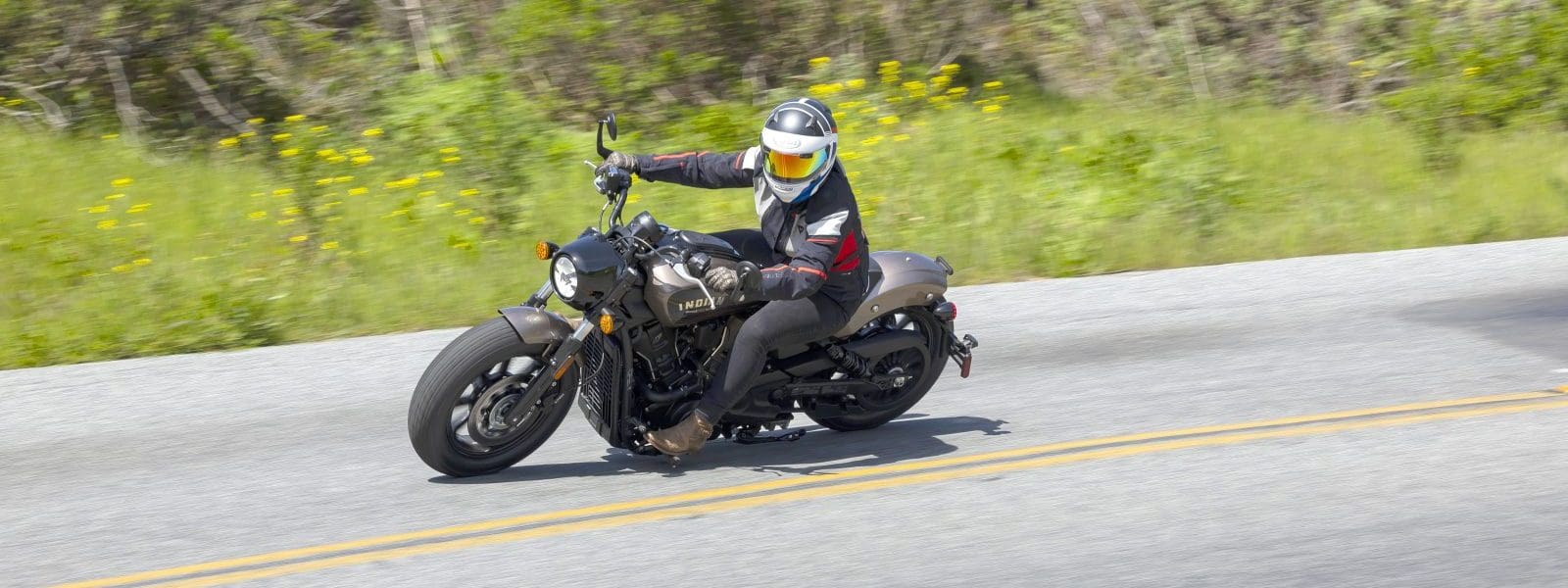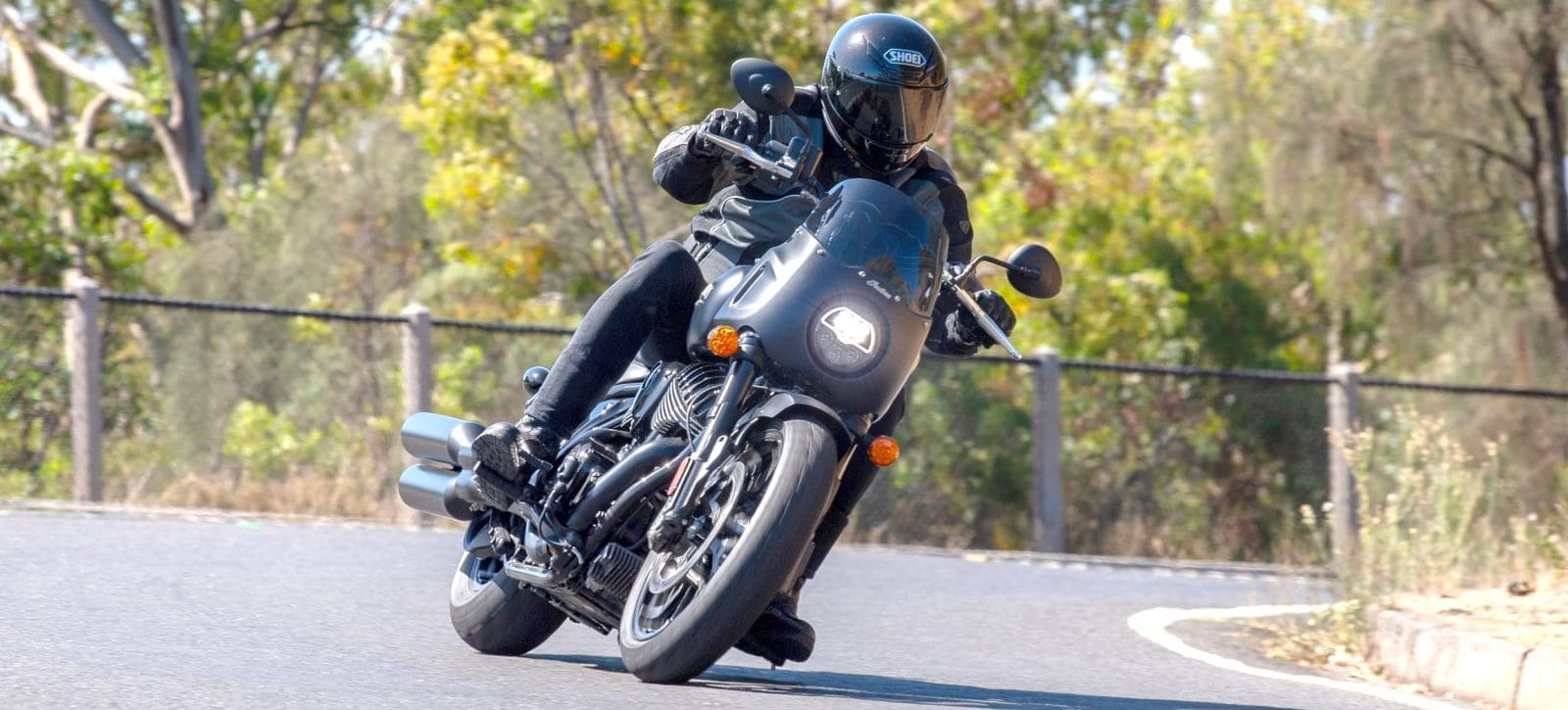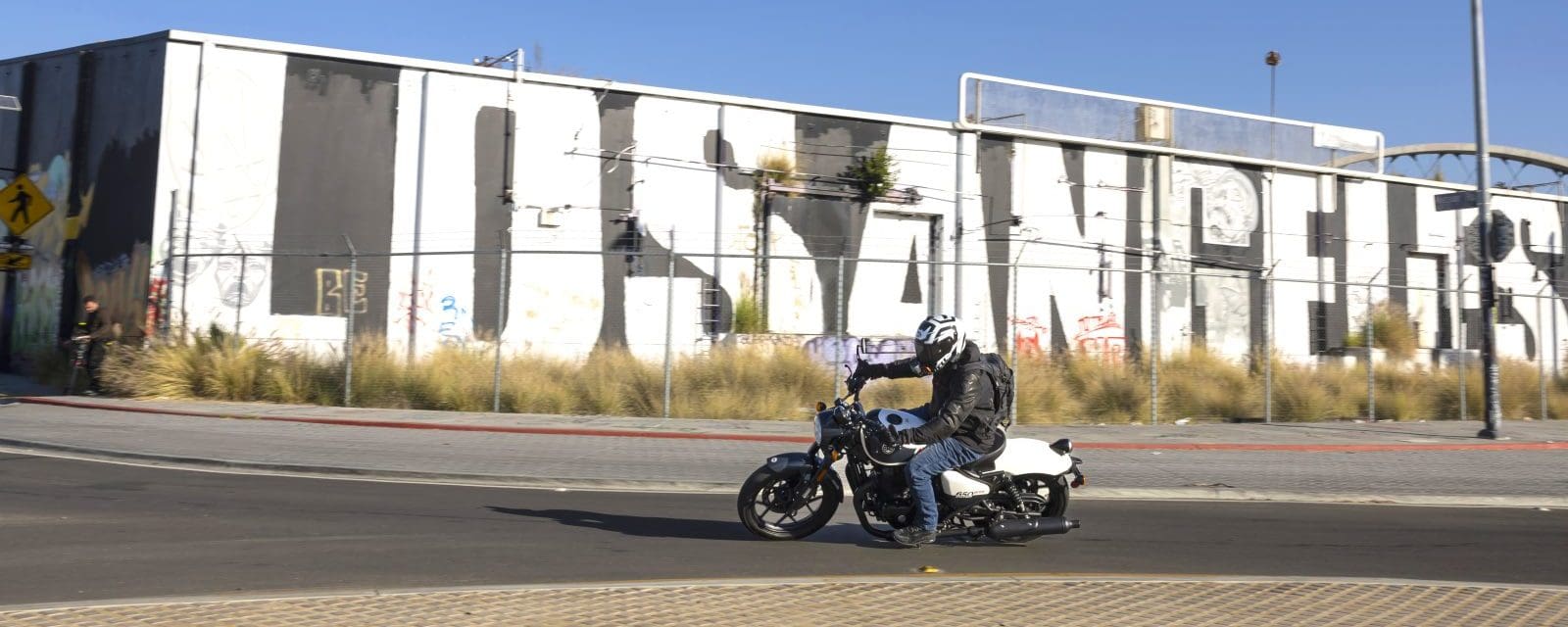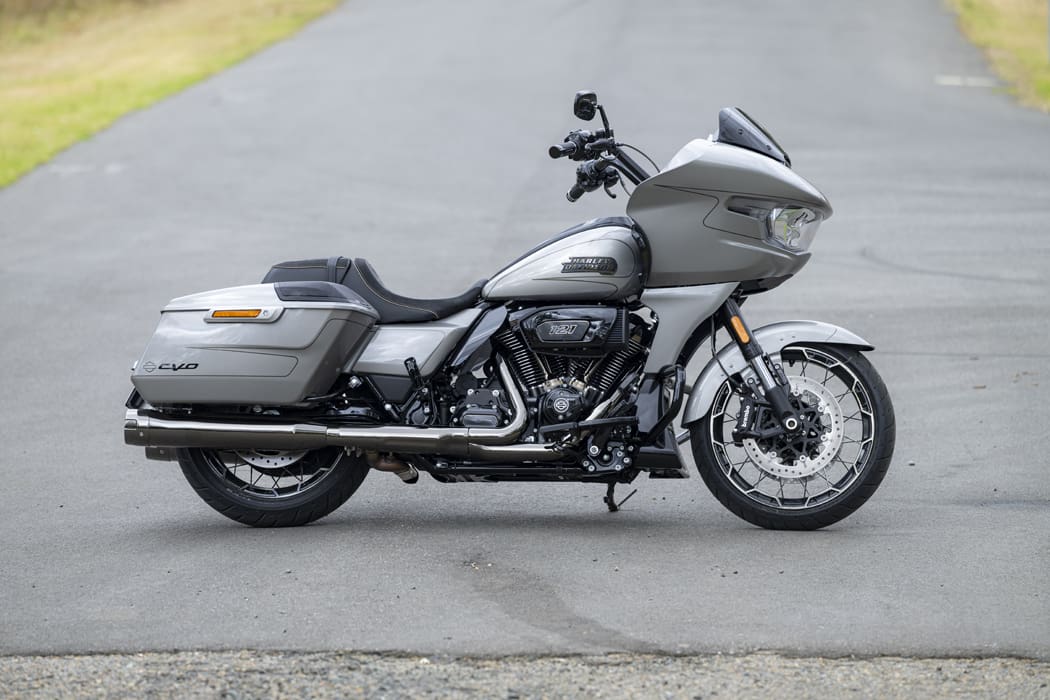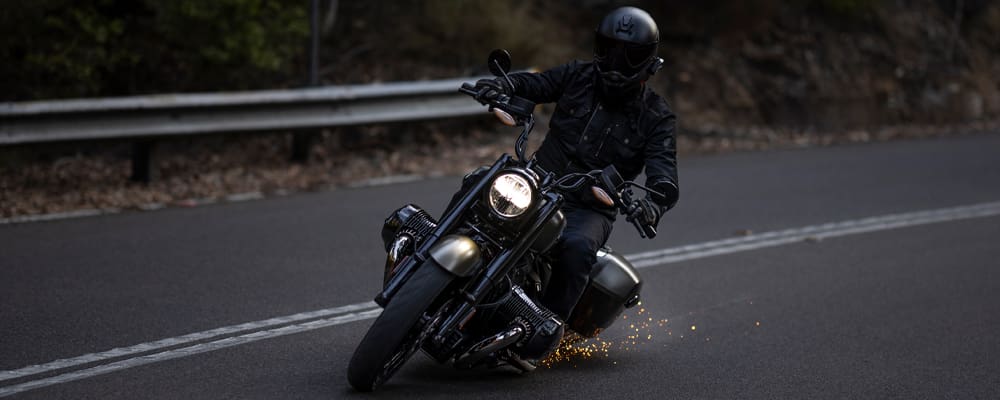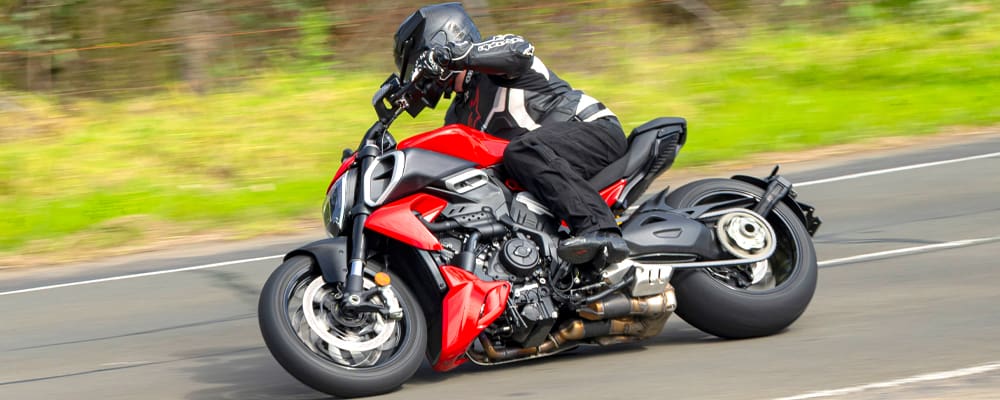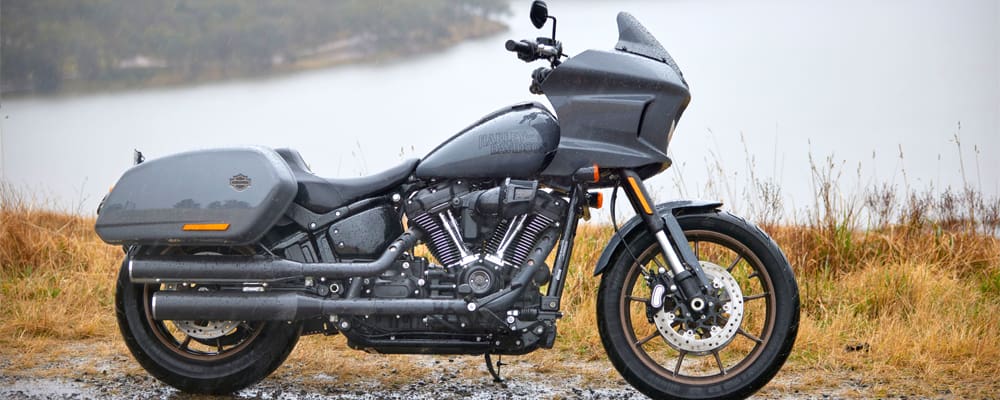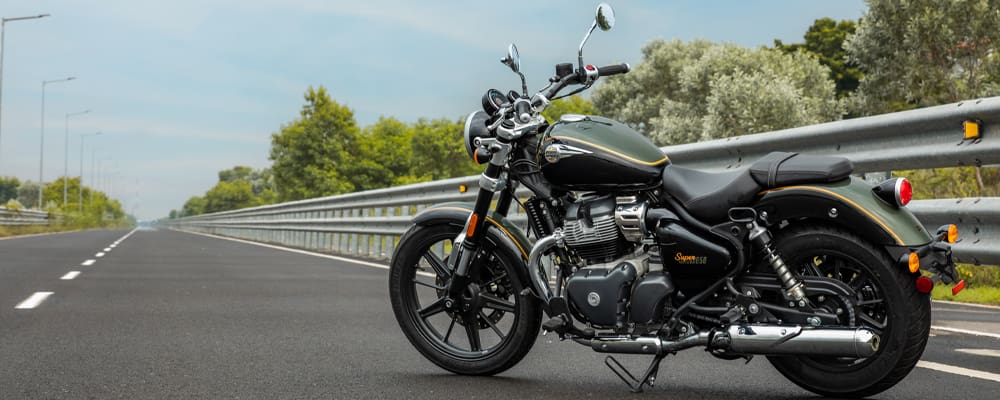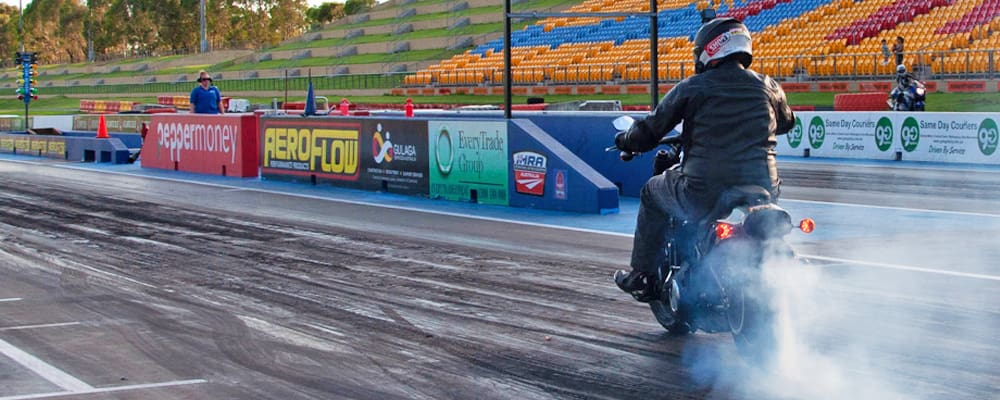The hulking, matt black, anti-social, licence-shredding Indian Sport Chief is the most recent player in that oversized hooligan bike sector perhaps started by the Yamaha V-Max back when Super Mario Brothers hit gaming consoles for the first time.
It’s a sector where the language is in Newton metres rather than kilowatts and whose participants get invited to the Christmas parties of their local tyre retailer whom they’ve made wealthy thanks to their frequent custom.
The Sport is the, well, sporty version of Indian’s updated Chief line-up, which came out a couple of years ago and sits among the Dark Horse, Bobber Dark Horse and Super Chief Limited.
These models are the brand’s boulevard-bashing cruisers and are a big-engined step up from the 1133cc Scout range. They are minimal in equipment when compared to the pannier and bodywork Bagger and Touring Indians, and share the air-cooled 1890cc twin of all but the highest specced in the range.
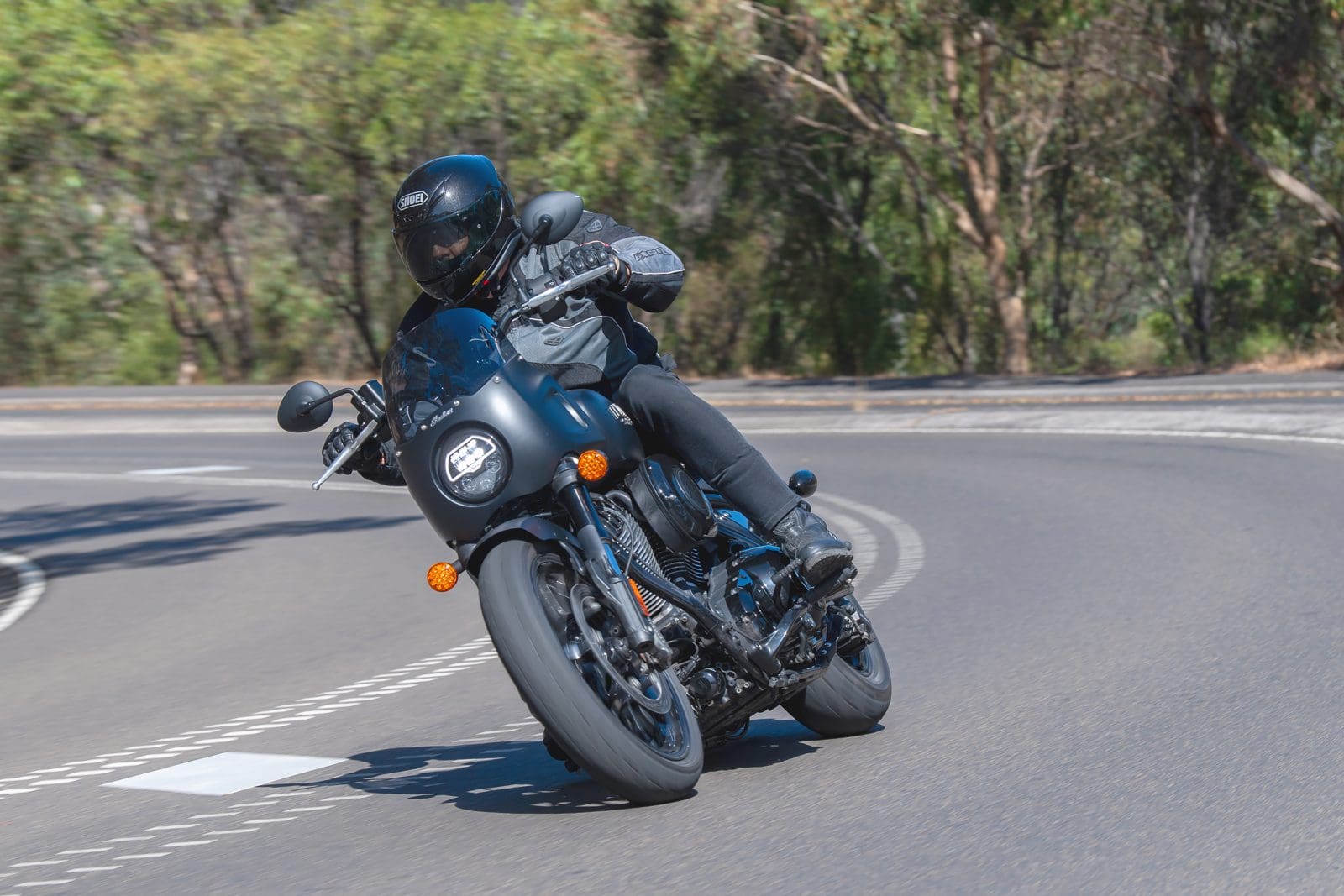
Case in Chief
The Sport was launched mid last year and differentiates itself from the other Chiefs with uprated suspension and brakes, slightly sharper steering geometry and a footpeg position which sits somewhere between the ergonomics of highway ’pegs and rearsets.
The bikini fairing is another individual touch in a platform which includes the air-cooled Thunderstroke 116 (1890cc) twin engine, fancy-pants four-inch touchscreen and more kilograms than are safe in some elevators. At 311kg wet, it’s not the lightest Chief (the Bobber is 304kg) but, to put things into perspective, it is 100kg lighter than the full-dress Indian Pursuit Limited.

In spite of, or perhaps because of, its pork, the Sport looks damned cool. Its sweeping, low-slung profile is cruiser art and the designers have done a great job of marrying the bikini fairing angles to match the lines of the teardrop petrol tank to create a visual flow back through the subframe to the rear axle.
The high handlebar, which sits on six-inch risers, in my view detracts a little from that aesthetic, which is best expressed in Indian’s Scout Bobber with its lower ’bar. You can go even higher with a 10-inch riser kit to nudge it towards that apehanger look if that’s your bag, but I’d be dispensing with the risers altogether and opting for the shorter screen accessory just to accentuate that old-school stance.
It’d also be matt black (Black Smoke), which is one of the 2023 model’s three colour choices – the matt red (Ruby Smoke) is less subtle and the glossy grey (Stealth Grey) is a bit meh. If you don’t like these last two options, there are new colours coming soon.
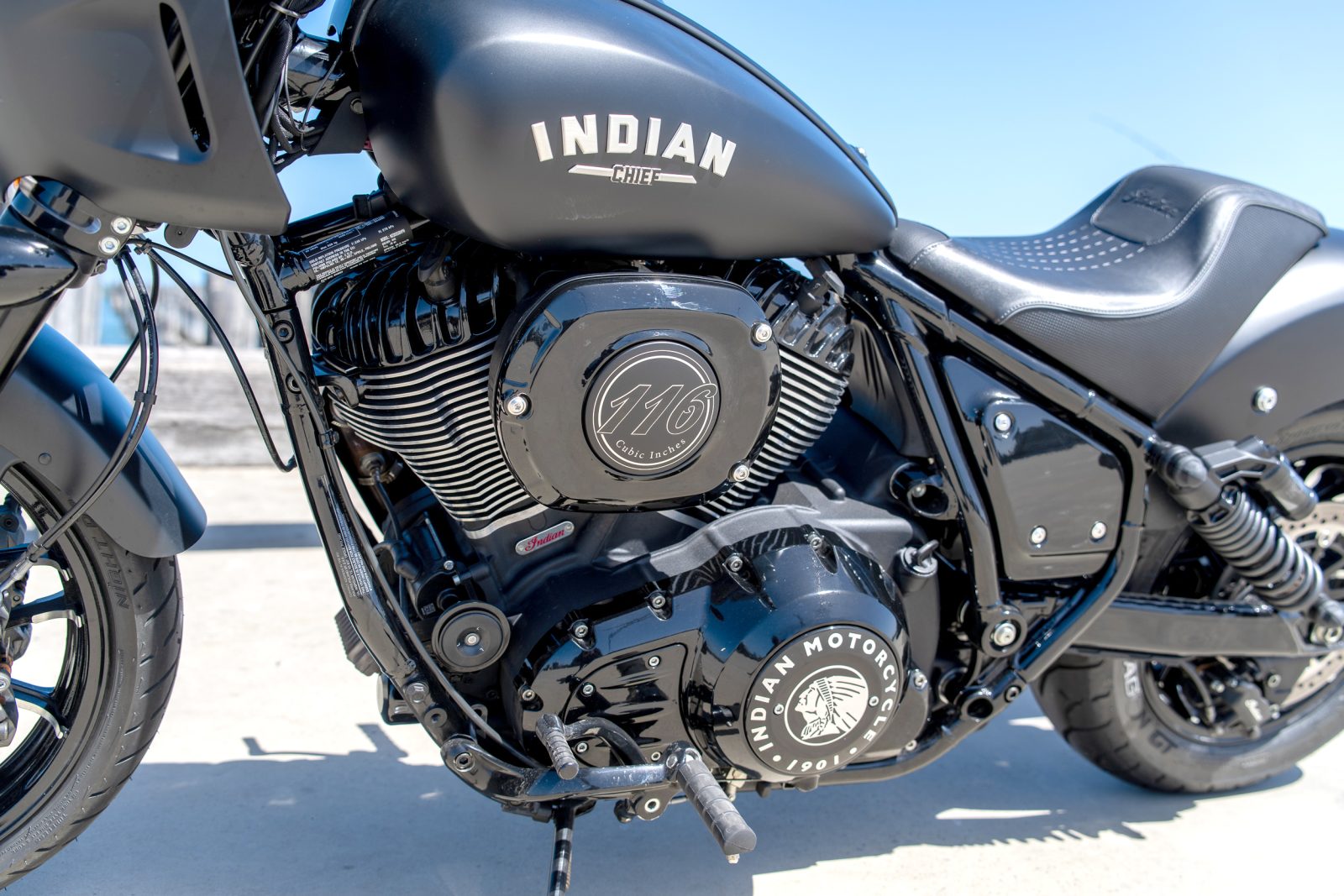
You’re on your own
The solo seat was a disappointment to my wife, who was equally impressed by the styling when the bike arrived at home. Were we to invest in such a machine, pillion ’pegs and the Chief Syndicate Seat option would be among the accessories we’d opt for. ‘Syndicate’ is an odd name for what appears to be a miserly effort at pillion comfort as there doesn’t appear to be room for more than one other let alone a syndicate of people. Perhaps the suggestion is that more than one is a crowd on the Sport as all the other options are solo as well, including a ‘Reduced Reach’ seat for “inseam-challenged riders” (Indian’s words, not mine).
As the name suggests, the seat makes it easier to reach the wide ’bar but, in stock configuration, this is a Stretch-sized ’bike and my 193cm frame fits nicely. The footpeg position is nice and neutral, and after four hours in the saddle I didn’t suffer any unusual aches and pains from the riding position.
When tackling the bends, I felt relaxed and in control with the ’bar close enough to allow positive input without feeling like I was reaching, although I’d love to give it a go with the lower ’bar accessory option.
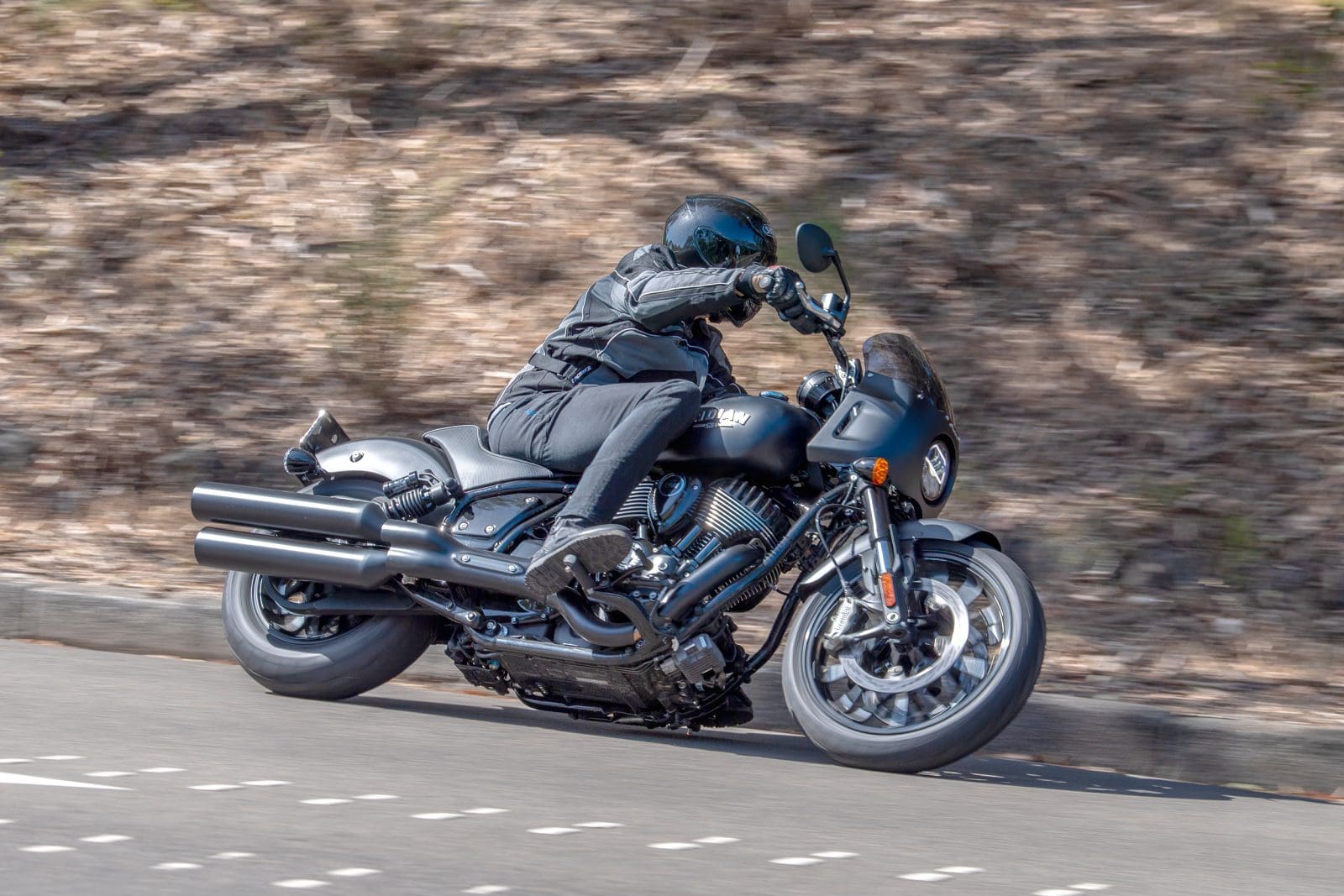
Commander in Chief
Hit the bike’s ‘On’ button (it’s keyless and PIN-enabled if you forget your fob) and the touch-sensitive TFT command centre displays a dramatic start-up animation and warning about getting distracted by all the wondrous digital magic it promises while operating the motorcycle. With good reason.
The system not only provides the basics like speed, tacho and fuel, but has inbuilt navigation and Bluetooth enabling control of what tunes play in your helmet, if you had such an option.
Flick through the various screens (it works with gloves on) and you will find controls to switch between the three engine performance settings, trip details including elevation and fuel economy information, and even a rear cylinder deactivation option designed to make things marginally less sweaty ’twixt the thighs when stopped at the traffic lights.

Much of this can be controlled by the trigger switches on the back of the switchblocks where your high-beam flasher might be on other bikes. So, without taking your hands off the ’bar, you can take phone calls, control the music and scroll through screen options.
Among those options is the choice of two speedo dashes, one with pretty much all the information in a bright and neat analogue style layout, the other primarily a tacho with large speed numbers in the middle, presumably for when exploring the outer reaches of 162Nm when any other information would be superfluous.
Crack addict
There is no question that acceleration will win this stonking 1890cc V-twin beasty many fans as there is nothing like the fluttery feeling in your gut when you crack open the throttle (select Sport mode for extra ‘crack’, not Touring which is more plumber’s crack) and storm down the tarmac with the rear hoop scrabbling for grip.
It verily punches from 2000rpm through peak torque at 3200rpm all the way to the 5000rpm redline with the cam coming on in a wondrous sonnet through the pipe until the fear of sirens and flashing lights tempers the urge for more.
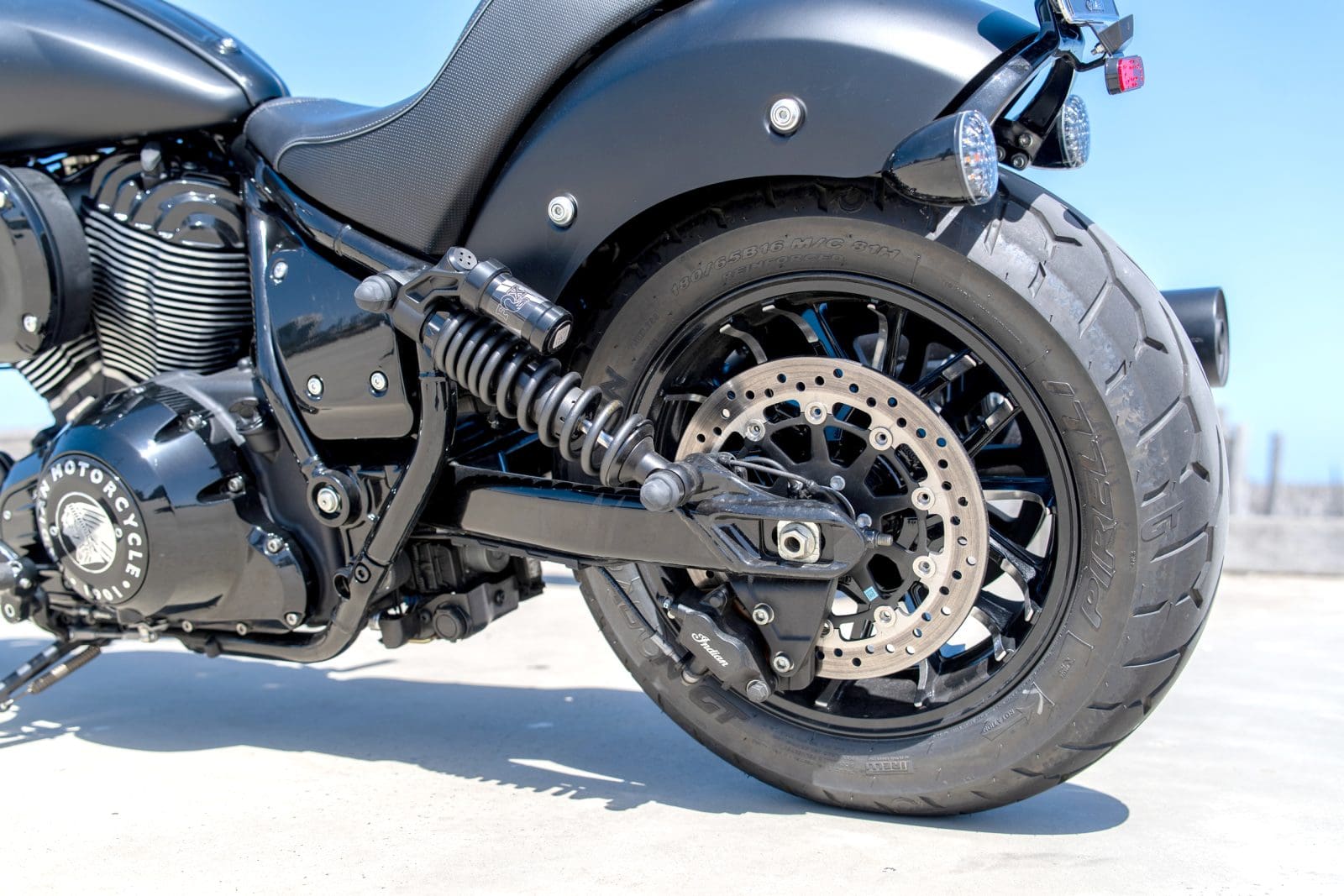
So can a 311kg cruiser, whose natural habitat is cruising beach roads on warm days, really have Sport in its name? If the sport was weightlifting, then yes! It’s got enough grunt to haul caravans (not recommended), but even the first roll out of the distributor’s carpark insisted that Indian’s chassis engineering department had created much more than a straight-line missile.
Master Chief
Using the Chief range for reference, at 28 degrees, the Sport’s rake is one degree steeper than the other three and trail has been reduced from 132mm to 111mm.
It shares the 19-inch front and 16-inch rear wheel of the Bobber (the other pair of Chiefs get 16s front and rear) but, oddly, the 1640mm wheelbase is 14mm longer than all the others, which seems to go against the effort to make it more nimble, if you can use such a word to describe this brute.
A familiarisation tour of the carpark revealed that the Sport changes direction surprisingly well and doesn’t have that heavy flop at low speed which was an annoyance of older cruisers. At the first roundabout the Sport demonstrated a sure-footed ease as it changed direction, helped by the low centre of gravity between the cases.
So what else was there to do but go barrelling into tight corners on winding backroads to explore the limits of ground clearance?
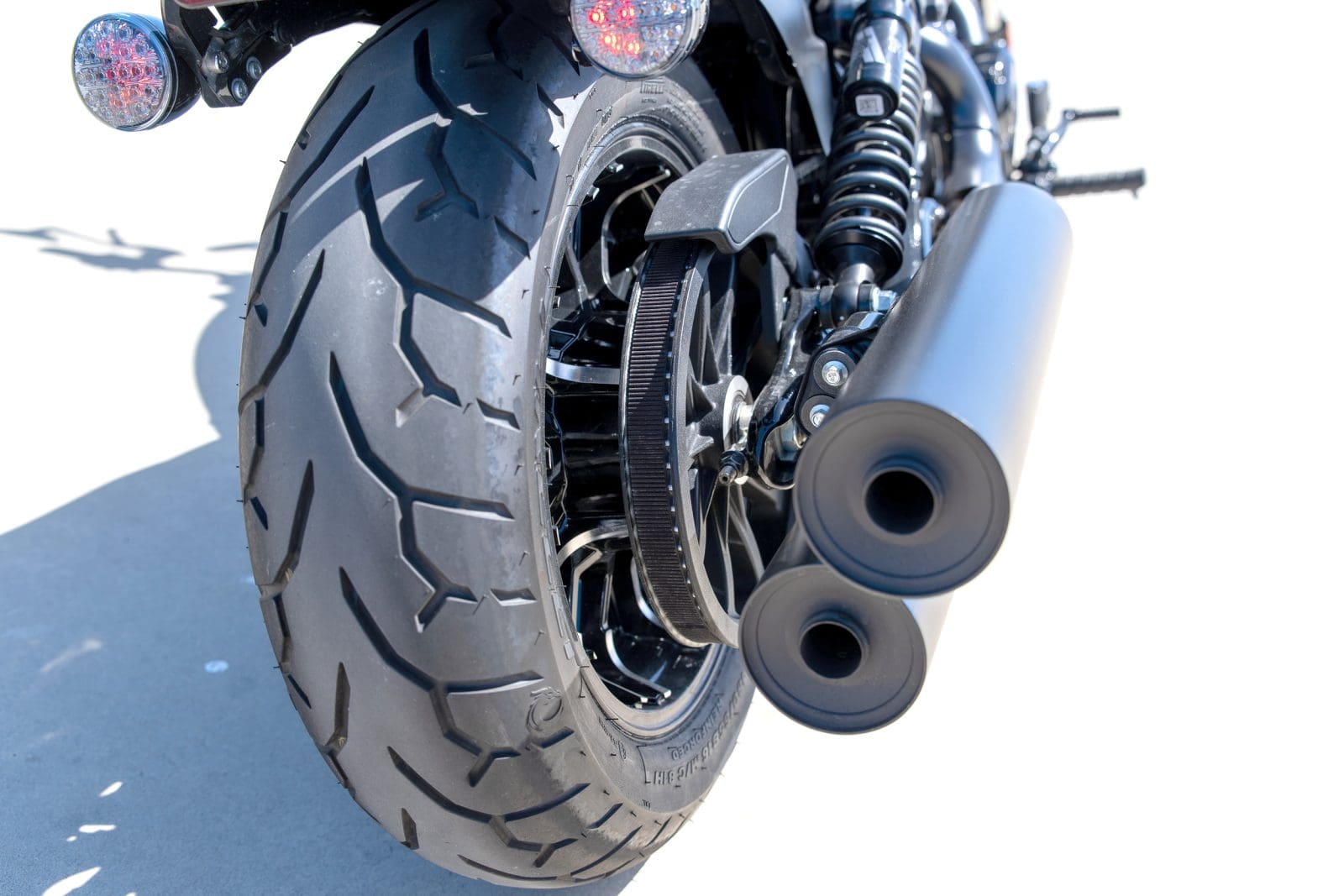
Sorry, Chief
The first scrape was unexpected and gave me a moment causing me to instinctively stand the bike up, but I was able to get back into the corner without getting luridly out of shape or running wide. That’s largely due to the dual Fox piggyback rear shocks and 46mm KYB inverted front fork keeping all that weight floating nicely over the Pirelli Night Dragons and everything pointing in the right direction.
Fork dive is present under heavy braking but it’s minimal, while bumps and humps are well absorbed so only a muted jolt is transferred through the seat rather than a more jarring
spine compression.
In this environment it’s never a wrestle to change direction. It’s not sportsbike sharp and requires positive input but holds its line with enough in reserve to allow alteration if required.
Yes, the corner clearance means there is wasted potential here, as told by the width of the chicken strip on the rear tyre, but it serves to remind us that the simple laws of physics mean you can’t have great corner clearance and maintain that cool cruiser stance at the same time.

It’s not a long journey, sadly. The stubby hero knobs on those mid-set ’pegs are drawing lines on the tarmac just when you start to imagine embarrassing the pilots of sportier steeds.
Whoa up
The days of crappy US cruiser stoppers are a distant memory and twin discs squeezed by four-piston calipers have become de rigueur. The Sport goes a step farther by employing Brembo four-piston calipers and 320mm discs and, by crikey, I’m glad they did because hauling up some 410kg of cruiser and Stretch in Sport mode takes some hauling up.
A firm squeeze invokes instant and progressive deceleration and I didn’t notice fade even after 25km of assertive bend bashing. The unbranded rear twin-piston caliper on 300mm disc also provides decent braking force so it never feels like you don’t have a fighting chance to bail out if things go pear shaped.
Incidentally, the rear brake fluid reservoir is mounted next to the foot lever with the brake line feeding down under the front of the chassis. There must be some sensible reason for this, other than the opportunity to get the word ‘Indian’ in clear view on the bike for the 22nd time, as it potentially exposes the line to stone damage.
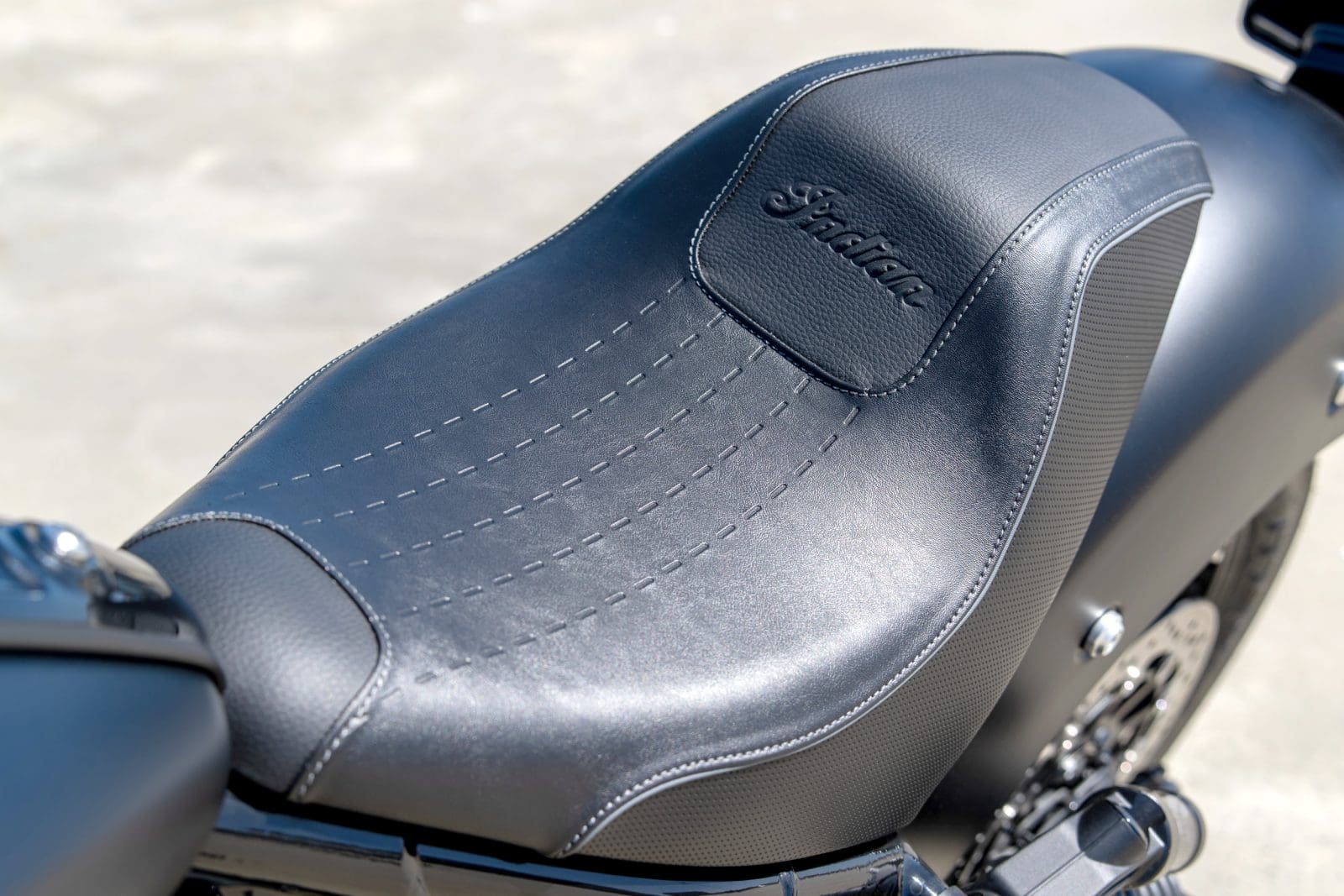
Chief commuter
While docile commuting work might not be the best use of the Sport Chief’s time, it does the job well enough. I preferred to be in Standard engine mode as Sport can be too aggressive in that environment and Touring took away too much of that gorgeous throttle response.
The gearbox responds best to firm and deliberate use of the foot lever, especially on upshifts when any hurry up will be met with stubborn resistance and a sore toe. Not that there’s any great need to explore the ratios, given the great globs of torque. Short-shifting up to third gear is pretty much all you need to do until you get on the highway.
When getting up it for the rent on a winding road, again firm but well-timed upshifts are most rewarding, and who doesn’t love stomping the lever on the way back down?
On a 35°C day during a long ride through town, I tried out the rear cylinder deactivation feature, which (when activated) shuts down the rear pot when the throttle is closed at idle and engine temperature is high.
The idea is to reduce the heat coming off the rear cylinder head positioned just below your reproductive organs, presumably to promote the propagation of more Indian motorcycle fans, if not for comfort.
I gotta say I didn’t notice a whole lot of difference in temperature – the cylinder and header pipe still chuck out plenty of heat – but some people swear by it.

Time’s up, sport
Dealing with engine heat and a lack of corner clearance are compromises we have become prepared to accept when venturing into the world of big-bore V-twin hooligan bikes. The reward for doing so is to be in possession of iconically cool styling and drag strip performance that is expressed well by the Indian Sport Chief.
That low-slung cruiser stance finished in matt black is gorgeous and there is little compromise in the attention to detail, which was a niggle of older models. I also like the modern touches, such as the clear and functional display and cruise control. Even the LED headlight, which is a horizontal strip in low beam, adds to the overall aesthetic.
It’s comfortable, oh-so powerful and just as at home on a weekend backroad scratch as it is posing on a beach boulevard making it a true sport cruiser.
PROS: Hair-on-fire acceleration; handles much better than it should; easy-to-read and informative display screen.
CONS: Party-pooping ground clearance; hot thighs from the rear cylinder; exposed rear brake reservoir.
TEST: JUSTIN ‘STRETCH’ LAW PHOTOGRAPHY: ROB MOTT

Rear cylinder deactivation
Keeping the inner thigh on your right leg from becoming bacon on a warm day is the thinking behind the rear-cylinder deactivation system switchable on the dash. It didn’t seem to make a whole lot of difference, but some riders love it.
Touchy subject
The lightly spring-loaded footpegs, which are in a comfortable mid-chassis spot, could perhaps be a bit shorter to give just that little bit more clearance the performance of the Sport cries out for.
Rear brake reservoir
It’s difficult to understand if the idea of putting the rear brake reservoir next to the foot lever was for styling or because it wouldn’t fit anywhere else. It does look kinda cool, but it doesn’t look like it would take much of a rock hit to do some expensive damage.
Who needs Netflix?
Indian’s four-inch thin-film-transistor touchscreen display features a butt-load of information from very useful things like fuel range and speed to less useful things like elevation. When hooked up to the app, it will control your tunes and smartphone as well.
Top-spec stoppers
Brembo looks after the four-pot front calipers each side of the 19-inch front wheel. Indian has gone to one of the big brands on brakes to help sell the Sport title and has chosen well, given the solid feel and stopping power.
SPECS
ENGINE
Capacity 1890cc
Type V-twin, hydraulic lifters, two valves per cylinder
Bore & stroke 103.2mm x 113mm
Compression ratio 11.1:1
Cooling Air
Fueling EFI, ride-by-wire
Transmission Six-speed
Clutch Wet, multi-plate
Final drive Belt
PERFORMANCE
Power Not given
Torque 162Nm @ 3200rpm (claimed)
Top speed 180km/h (est)
Fuel consumption 5.1L/100km (measured)
ELECTRONICS
Type Not given
Rider aids ABS, rear-cylinder deactivation
Rider modes Sport or Touring
CHASSIS
Frame material Tubular steel
Frame type Cradle
Rake 28°
Trail 111mm
Wheelbase 1640mm
SUSPENSION
Type KYB/Fox
Front: 43mm non-adjustable USD fork, 130mm travel
Rear: Dual piggyback shocks, preload adjustable, 100mm travel
WHEELS & BRAKES
Wheels Cast aluminium
Front: 19 x 3.5 Rear: 16 x 5.0
Tyres Pirelli Night Dragon
Front: 130/60-19
Rear: 180/65-16
Brakes Brembo
Front: Single 320mm discs, four-piston calipers
Rear: Single 300mm disc, twin-piston caliper
DIMENSIONS
Weight 311kg (wet, claimed)
Seat height 686mm
Width 842mm
Height 1270mm
Length 2301mm
Cornering clearance 29.5°
Fuel capacity 16.1L
SERVICING & WARRANTY
Servicing First: 1000km
Minor: 8000km
Major: 15,000km
Warranty Two years, unlimited kilometres
BUSINESS END
Price From $32,995 (ride away)
Colour options Black Smoke, Ruby Smoke, Stealth Gray
Contact www.indianmotorcycle.com.au



